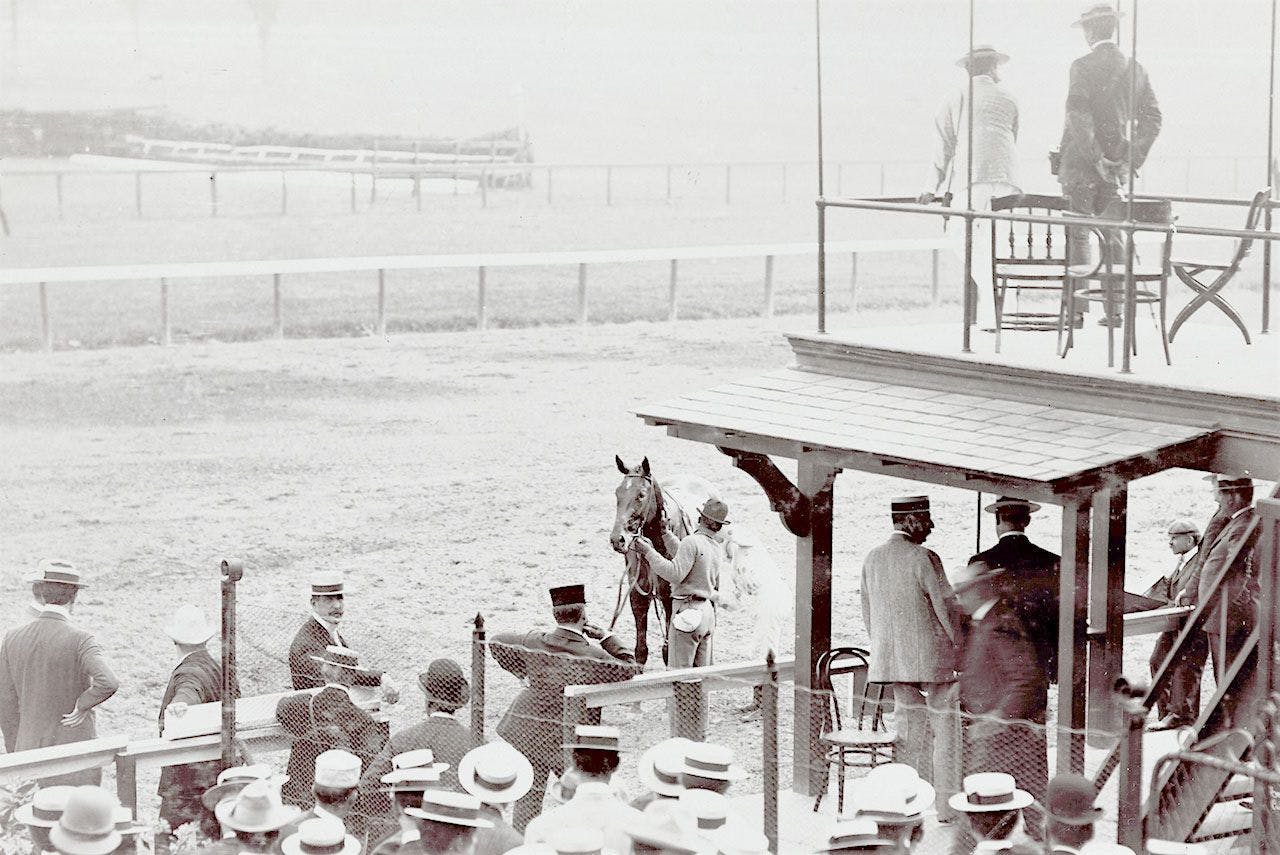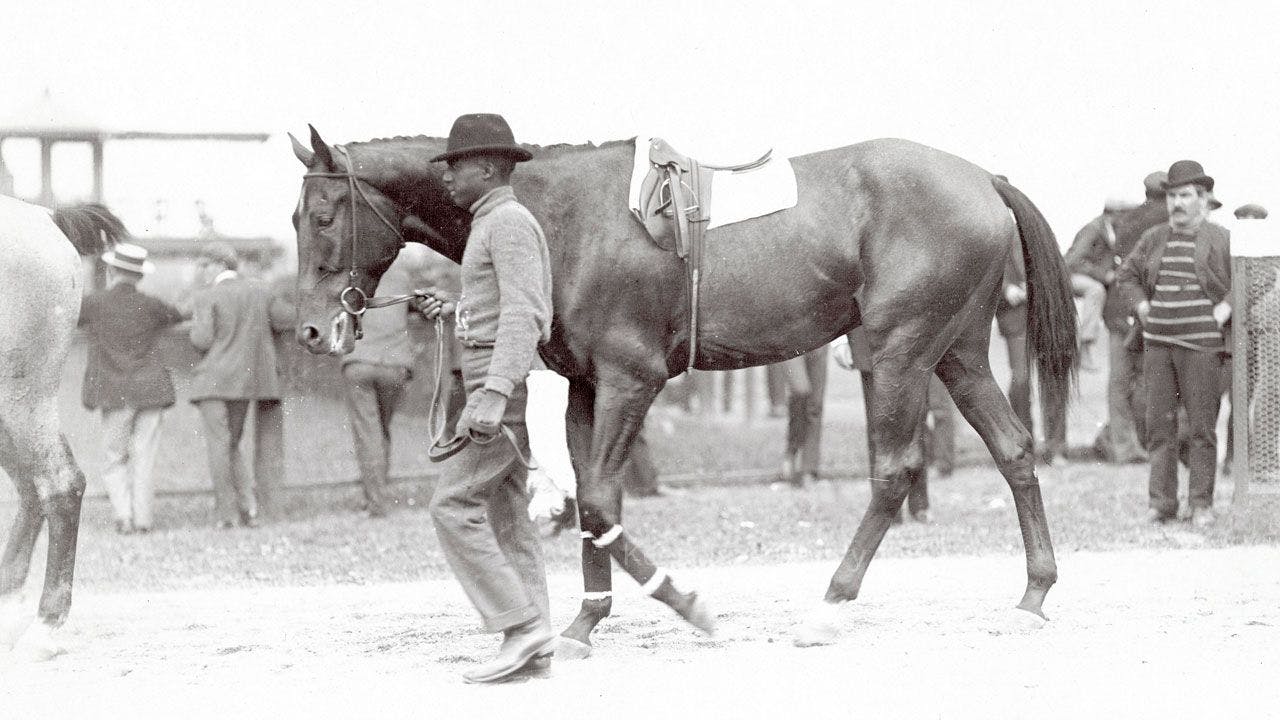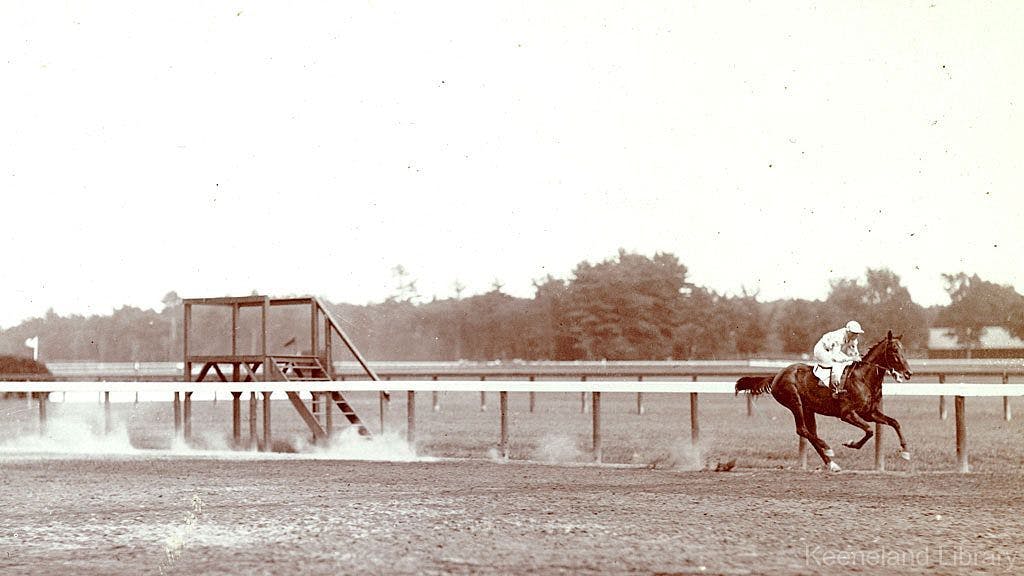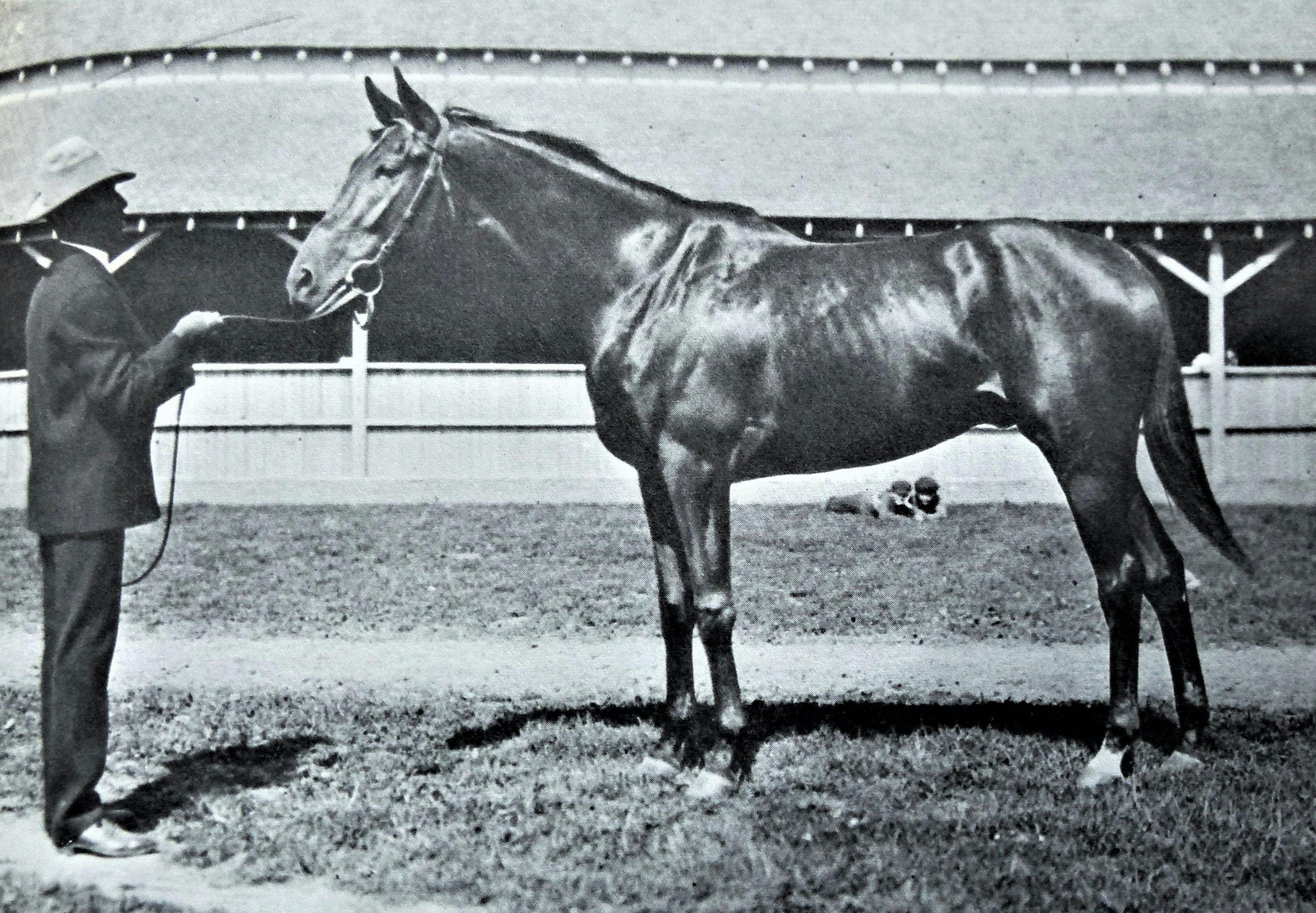Tall Tales of the Track: Sysonby, the (Almost) Unbeatable

Like Man o’ War and Native Dancer and Zenyatta, this horse was as close to perfection as is attainable in the sport of horse racing.
A skeleton of a horse once hung in the American Museum of Natural History, the limbs positioned as if in flight. S. Harmsted Chubb, research associate at the Museum with an interest in anatomy, had solicited a devastated owner to make his famed horse a part of this collection, because, in the eyes of many in the first decade of the 20th century, this was an example of perfection.
For a century, visitors might have seen this skeleton and the name Sysonby and walked away without understanding how real this horse had been. Like Man o’ War and Native Dancer and Zenyatta, this horse was as close to perfection as is attainable in the sport of horse racing. Sometimes, though, all it takes is the right horse in the right place on the right day to end a streak.
And, in the case of a horse named Sysonby, defeat needed even more help to find him.

Sysonby and jockey Arthur Redfern mounting at Saratoga, 1904. (Photo courtesy of Keeneland Library/Hemment Collection) Permission must be acquired from Keeneland Library prior to use.
Unexpected Perfection
 By 1904, James R. Keene was no stranger to the ups and downs of both stock markets and horse racing. The Englishman had come to California, made a fortune in the American West, and then brought his talents east to New York. His initial investments in racing brought him success with horses like Spendthrift and Foxhall, but soon losses in the Chicago grain markets caught up to him. Debts forced him to sell everything, including his horses, in 1884.
By 1904, James R. Keene was no stranger to the ups and downs of both stock markets and horse racing. The Englishman had come to California, made a fortune in the American West, and then brought his talents east to New York. His initial investments in racing brought him success with horses like Spendthrift and Foxhall, but soon losses in the Chicago grain markets caught up to him. Debts forced him to sell everything, including his horses, in 1884.
But Keene was not down for long. Within a decade, he was back on top and back to building a stable full of stars, including the speedy Domino and Commando, 1901 Belmont S. winner. In 1901, Keene bought a British mare named *Optime in foal to Melton, winner of the Epsom Derby and the St. Leger in England, a fortuitous purchase. In February 1902, *Optime foaled a lop-eared bay colt Keene named Sysonby, for an English hunting lodge his son Foxhall frequented.
Unattractive and slow, Sysonby was initially part of a lot of yearlings that Keene wanted to sell, but subterfuge on the colt’s behalf by trainer James Rowe kept the horse stateside. “Said to be the star two-year-old in Keene’s barn,” according to newspaper reports, Sysonby won his first race, a 5 1/2-furlong maiden, by six lengths. He graduated to a stakes race for his next start and took the six-furlong Brighton Junior S. by five lengths.
Next, the Keene string went north to Saratoga for late summer racing. The Spa featured a number of prestigious juvenile stakes as owners and trainers pointed their two-year-olds toward the rich Futurity S. at Sheepshead Bay. His previous performances scared off most of his competition, facing only three others in the Flash and then two others in the Saratoga Special.
“Sysonby just spread-eagled his company,” the Washington Times reported, “and won as he pleased in a gallop,” by six lengths in both races.

Sysonby at Saratoga paddock, 1904.(Photo courtesy of Keeneland Library/Hemment Collection) Permission must be acquired from Keeneland Library for use.
As the Futurity approached, Keene’s colt was the talk of the town. Rumors swirled that W. B. Leeds had offered $100,000 for Sysonby, but owner and trainer could not bear to part with the bay colt. He looked virtually unbeatable, so much so that even John E. Madden, the trainer, owner, and breeder who would eventually be credited with five Kentucky Derby winners, said he sold all of his colts because “he made up his mind that the fleet youngster could beat anything in the East.”
RELATED: Tanya proved worthy of her ancestry in 1904 Spinaway, Hopeful
“Sysonby is the greatest colt I ever had or ever saw,” Keene said. “He is better than Commando and could beat the head off Hamburg.”
A victory in the six-furlong Futurity would seal the deal for Sysonby, who was already riding high in the opinions of horsemen and fans everywhere. The son of Melton was many lengths undefeated and look unbeatable. That always seems to invite trouble.

Sysonby and jockey Arthur Redfern win the Flash Stakes at Saratoga Aug. 1, 1904. (Photo courtesy of Keeneland Library/Hemment Collection) Permission must be acquired from Keeneland Library prior to use.
Startling Defeat
The field for the Futurity read like a who’s who of the Eastern juveniles, including Tanya, Agile, Artful, and a long list of others. These future champions, all highly regarded in their own right, hardly held a candle to Sysonby in the betting ring at Sheepshead Bay. Together with stablemate Wild Mint, he went off at 13-20, the shortest of prices. “There is nothing in the field that can touch him,” the crowd murmured.
In the crowded field of 16, Sysonby was set to line up on the far outside.
The start was good, though later accounts would say that the Keene colt had broken sideways but had no trouble getting into stride. His lead was short for the first half-mile, barely a head in front of the maiden Artful. Coming out of the bend and into the stretch, rather than striding away from the competition, Sysonby was done. Artful took the lead for good, a length in front in a matter of five or six strides.

Sysonby (Photo courtesy of American Museum of Natural History / Henry Fairfield Osborn / Public Domain)
The crowd groaned, some spectators white as a sheet when they realized just how much they stood to lose on the formerly unbeatable colt now surely beaten. Artful crossed the wire five lengths ahead of fellow filly Tradition, who was just a head in front of Sysonby. It took a stakes record time to win the Futurity, 1:11 4/5, as Artful notched her first win in a career that would land her in the National Museum of Racing and Hall of Fame.
As for Sysonby the Unbeatable, the third-place finish was puzzling. Nothing before the race signaled that the colt was off. Neither Rowe nor Keene could explain the performance, but they did note that he seemed tired after the race, so Sysonby was given a three-week break. Two days after the Futurity, as Foxhall Keene later recounted, Rowe noticed one of the colt’s grooms had a thick roll of cash and was drunkenly spreading his money around. The trainer questioned the groom until he was able to elicit a confession.
The man had been bribed to give Sysonby tranquilizers before the Futurity so that the gamblers involved could place large wagers against the Keene colt. While the outcome for that groom is unknown, what his confession highlighted was this: Sysonby managed to lead for four of the six furlongs and held on for third despite being tranquilized.
It would be Sysonby’s only defeat.

Sysonby, center, with James R. Keene staff cooling out in 1904. (Photo courtesy of Keeneland Library/Hemment Collection) Permission must be acquired from Keeneland Library prior to use.
Tragic Finale
The son of Melton and *Optime would win his last start of his two-year-old season with ease and then would follow his stellar juvenile campaign with nine wins in his nine starts at age three. Keene planned to bring him back for his four-year-old season, but Sysonby was stricken with the variola virus before he could make his first start. Soon, he was running a fever of 105 degrees, his eyes glassy and his characteristic verve gone. He died on June 17, 1906, and was buried near the Keene barn at Sheepshead Bay the next day, with a crowd reportedly 4,000 strong attending the memorial.
James R. Keene later donated Sysonby’s body to the American Museum of National History, where Chubb made him part of that display of the ideal. Though Sysonby was inducted into the National Museum of Racing and Hall of Fame in 1956, Keene’s colt has slipped to the back of the sport’s consciousness through the passage of time, a legend in his own time now a tall tale in our own.
Sysonby the (Almost) Unbeatable was a real horse, and only chemical interference and criminal intent seemed to get the better of Keene’s champion.

Sysonby (Photo of Public Domain / Wikimedia Commons)
ADVERTISEMENT



